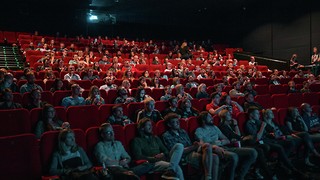Swords and Sandals: Films need History
Alex Izza shouts out to Hollywood for greater characterisation in historical blockbusters

79 AD. The year that shook the Roman world. The eruption of Vesuvius has obsessed popular culture since Pompeii’s rediscovery in the eighteenth century, and the latest film from Paul W. S. Anderson is no different. What this film does, however, is go for well-trodden territory over nuance, returning to the obsessed-over image of the gladiator. It begins and ends with beautiful cinematography, the words of Pliny the Younger transposed against haunting images of the Romans frozen in time. Yet the body of the film simply takes the legendary challenge to a gladiator's authority (now synonymous with Russell Crowe) and shoves Kit Harington into his place, creating a jarring and unbelievable set of characters for the Roman World.
I should note that, outside of the Romans themselves, the eruption of Vesuvius is perfectly executed. The closet geographer in me was thrilled by the unearthly pace of the pyroclastic flow and the richness of Vesuvius’s fiery explosion.
First year Magdalene classicist Alex Lord underlines the real problem of Pompeii: “I just don’t buy into the film.” I am not asking everyone to study classics before watching a film like Pompeii, and his criticisms, like the film’s apparently obtuse view of Roman citizenship, are immaterial to 99 per cent of audience members' enjoyment of the film. However, his essential point applies to us all. By going for ridiculous spectacle over believability, films like Pompeii compromise their chance to use the past in a successful way.
We have only to look at Kit Harington’s sterling performance in Game of Thrones to recognise that the problem lies not with the actors, but with the director concentrating on Harington’s chiselled body rather than creating a developed character. Another example is Ridley Scott’s Robin Hood. While he does make admirable strides to add realism to the hero of Sherwood Forest, by choosing Russell Crowe and his truly woeful English accent he compromises the audience’s engagement with the film.
Then perhaps the best way to create history successfully in cinema is to balance these images of spectacle with believable characters. One film others could learn from is Django Unchained. Set in nineteenth-century America, this film could easily have just churned out the classic images of North versus South in the Civil War as a way of exploring slavery. But the director was Quentin Tarantino. He chose instead to set it in the antebellum South and delve into the heart of the slavery institution’s psyche. Many would argue that Tarantino is just as culpable as Ridley Scott or Paul W. S. Anderson, creating a plot involving a German ‘dentist’ freeing a slave and getting him to help in his bounty hunting business. Yet this misses my essential point, that Tarantino’s sweeping recreations of antebellum America, against the much more subtle developments of vicious characters like Calvin Candie, creates a rounded and engaging dramatisation of the past.
So next time you reach for a sword, Hollywood, don’t forget the man holding it. And, Ridley Scott, please, please, please don’t give me another film with an ‘English’ accent!
 News / Tompkins Table 2025: Trinity widens gap on Christ’s19 August 2025
News / Tompkins Table 2025: Trinity widens gap on Christ’s19 August 2025 Comment / A plague on your new-build houses18 August 2025
Comment / A plague on your new-build houses18 August 2025 News / Pro-Palestine activists spray-paint Barclays Eagle Labs18 August 2025
News / Pro-Palestine activists spray-paint Barclays Eagle Labs18 August 2025 News / Pro-Palestine activists urge new Chancellor to ‘condemn Israel’20 August 2025
News / Pro-Palestine activists urge new Chancellor to ‘condemn Israel’20 August 2025 News / Trinity sells O2 Arena lease for £90m12 August 2025
News / Trinity sells O2 Arena lease for £90m12 August 2025









